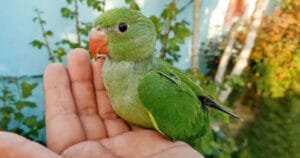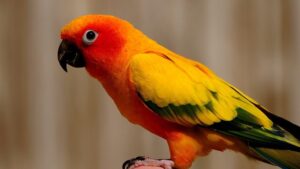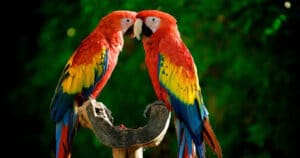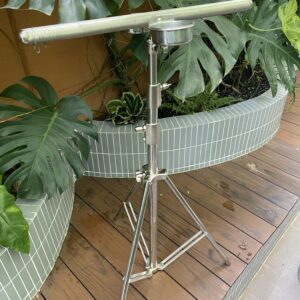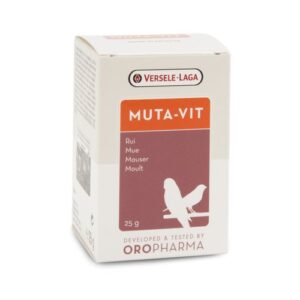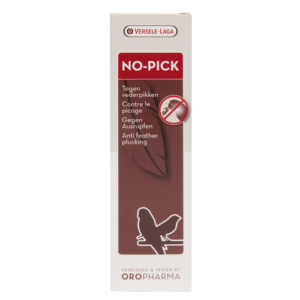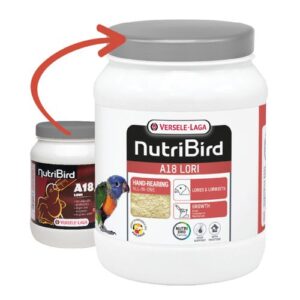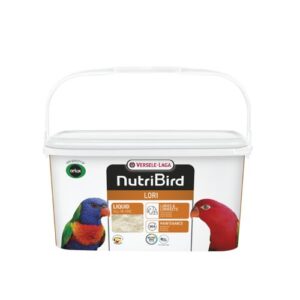This post is to help those who do not have chance to buy a baby parrots carry out their passion.
Domesticating Parrots
Step 1:
Of course, you have to prepare a parrot. The parrot chosen should have beautiful fur, strong body and pee hole needs to be checked if faeces is sticked on around fur…If you do not have enough experience, you should take an experienced one along with you.
Step 2:
You need to research information about the parrot you are going to domesticate. Because each species of parrot has typical behavior. Nutrition knowledge, favorite food, specific features are all to serve the process of domesticating your parrot. The more you understand about your parrot, the more smoothly you can handle the cases during the domesticating process
Step 3:
Safe solution when starting domesticating. You should prepare a protective glove (though you have gloves, the bite of your parrot can still make you bleed but it is anyway better than without gloves). A stick should be also prepared for parrot to bite (instead of biting your hands) during the domestication.
Step 4:
Bathing your parrot. Why should parrot have bath? Because your parrot is bought from shop, they all carry louses. Therefore, that bathing parrot with salty water and shamppo then washing it after several minutes with clean water is not only the treatment for louses but also the clean of your parrot. On the other hand, the main purpose of bathing for parrot is that they will stand quietly and become less aggressive, almost no bite anymore. In this moment, it is easier for you to do anything with it.
Step 5:
Starting the domestication. Before starting, there are some questions. Why does your parrot bite you? The answer: Parrot uses its beak not only to move, peel foods but also to protect itself. It bites in case of feeling the danger. Therefore, now you have to make your parrot feel that your behaviors are not dangerous to it. Continueing step 4, parrot getting wet will stand quietly. Use one hand lift the stick to its beak and wait till it bites, the other hand cuddles it from behind.
Not all parts of parrot is ok to be cuddled. Some parts parrot reacts less, other parts porrot reacts more. Following my experience, you should cuddle its head, back, shoulder. Absolutely do not cuddle its tail and chest. You need to fucus on cuddling around its eyes, your parrot will gradually feel comfortable. Remember to repeat one status (to make it feel that your behavior doesn’t affect it – you will clearly realize when cuddling, your parrot harden its body when being cuddled but then it will loose body).
For example: If you cuddle its wings, repeat several times. Prevent cuddling wings then cuddling head,…cuddling several parts is not good for the domestication. If you cuddle your parrot wings, it will harden its body then loose it; you continue cuddling its head, it will again harden its body then again loose it.

So cuddling several parts one time is scaring your parrot. If you want to change the position to cuddle, you need to do it slowly because your parrot is very aware in this stage so it is often startled. And when it is startled, bad case will happen. Next, many people do not dare to scrabble its beak because of affraid of being biten – Actually, if you don’t know how to scrabble, being biten is obvious (you have to scrabble its beak if you want to feed it without affraid of being biten). This is a hand position to scrabble your parrot’s beak which prevent its bites so you should confidently do it.
After feeling that your parrot does not intend to bite you, gradually move down to its lower beak. Now your parrot won’t bite you anymore (in case you do not startle it) then while scrabbling his beak, bring a rice and slightly push it to your parrot’s beak. Next, cuddle its leg (to prepare for next step: making it climb on your hand).
Step 6:
After your parrot does not bite you anymore, the next step is to make it stand on your hand. To do so, tie its leg and your finger at the 2 ends of a small rope. At first, your parrot will jump out of your hand and be hanged. Just ignore it and it has to climb up itself. After a period of time, your parrot won’t jump out anymore. Similarly, do the same when you want to make it stand on standing bridge.
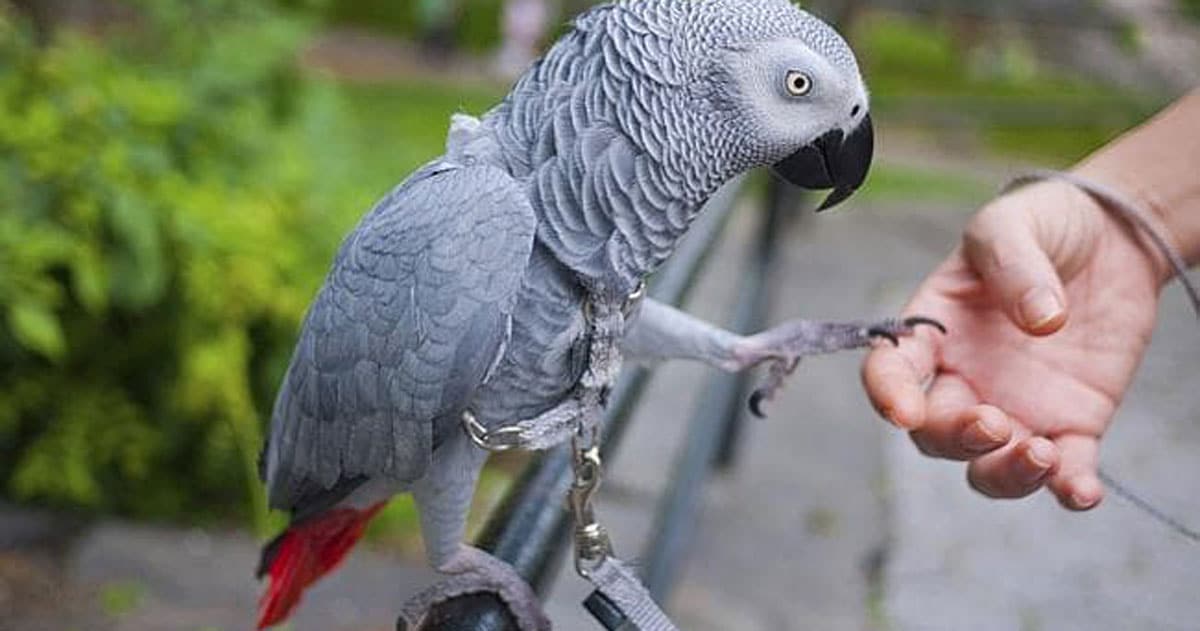 Making your parrot stand on your hand is an important step in domestication
Making your parrot stand on your hand is an important step in domestication
Attention
In domestication: follow it to domesticated, do not prevent its intends to domesticate.
For example: when you want to make your parrot stand on your hand (if you don’t use the method which ties its leg and your finger, you can do the following one), bring it on your hand then click the clicker and feed it but your parrot will intend to jump out. As usually, you will try to keep it on your hand by using the other hand to prevent it from jumping out. Doing so will make your parrot uncomfortable. Instead of doing so, quickly take your parrot down as its wish and then bring it back on your hand as well as feed it, maintain this status until your parrot wants to get down. You should sometimes take it down and let it play with its toys then bring it on your hand again.
In this stage, let your parrot play much, prevent capturing it in cage, that makes it aggressive again. The best things in this stage is to let it stand on standing tree.
During domestication, always bring food along with you. Feed your parrot anytime you meet it. After completing above steps, you can let it stand on your hand or shoulder to go out, feed it foods that you and it can eat together. You will own a souldmate!

